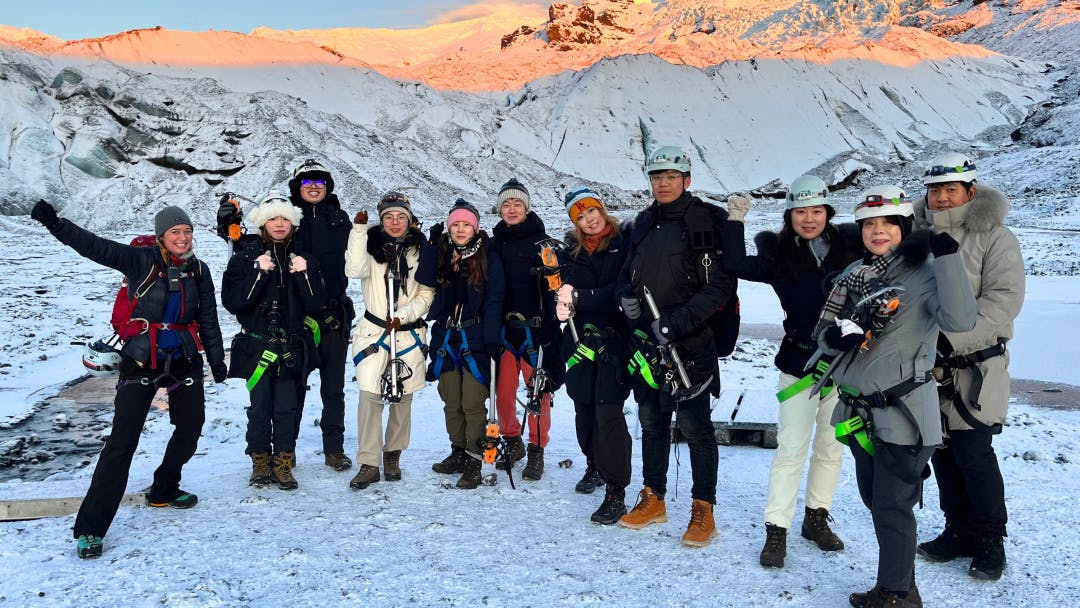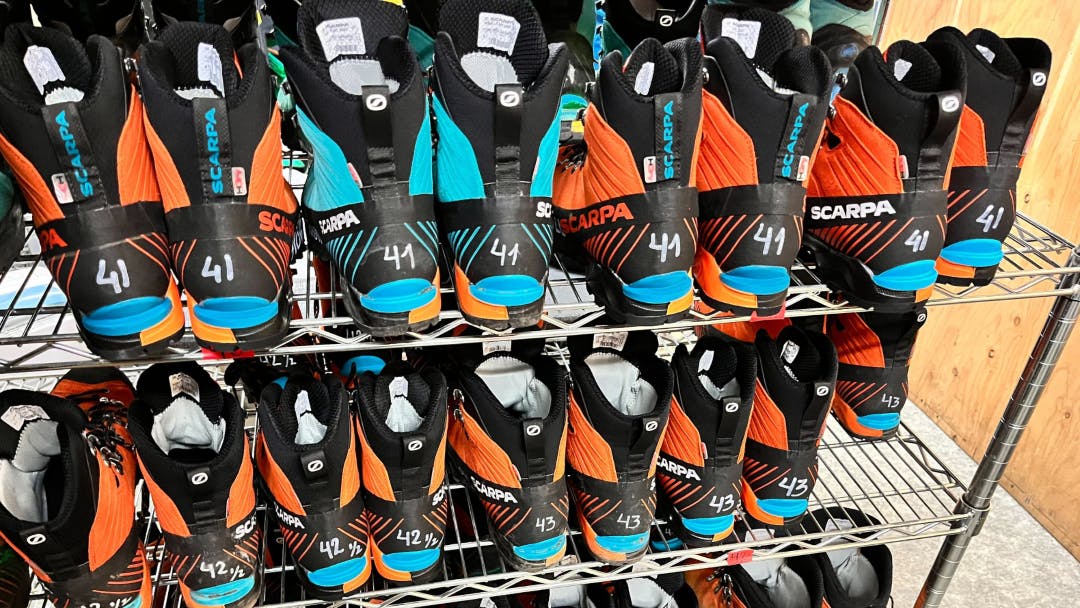
What to wear on a Glacier Hike in Iceland
This is one of the most frequently asked questions by our guests. In this article, you will find complete information on how to dress correctly for this amazing adventure!
Appropriate clothing can make your hike comfortable and safe, providing protection from the extreme weather conditions you may encounter on the glacier.
Let's start with the weather in Iceland:
Iceland has a much milder climate than its name suggests. This is partly due to the Gulf Stream, which flows along western and southern Iceland, bringing heat from the Caribbean.
This also means that mild Atlantic air mixes with cold Arctic air flowing in from the north and causes sudden and frequent weather changes.
That's why there are a lot of wind and storms. Precipitation is also high, although it tends to occur in the south compared to northern Iceland.

“If you don't like the Icelandic aura, wait five minutes, and it will change.”
It's hard to disagree with this Icelandic proverb, because the weather on the island can change very quickly! In one day we can experience all possible seasons and atmospheric phenomena. Rain, drizzle and strong wind are very common.
Therefore, the most important criterion when choosing an outfit is to put on layers that can be easily removed or put on.
The same principle applies on a glacier.
Weather on the glacier - what is worth knowing:
Depending on the season, the temperature on the glacier will also vary. Regarding average temperature, in winter it will be around 0 Celsius (32 Fahrenheit) and in summer somewhere around 9 (48.2 Fahrenheit) to 15 Celsius (59 Fahrenheit).

Layers are the most important thing!
To feel good and comfortable while hiking on a glacier, you need to layer up. What does it mean? That we have to have layers like an onion! Another very important element of clothing are clothes that will make you feel comfortable - jeans are not recommended.
The rule of dressing in layers is crucial when hiking on a glacier. It consists of three layers: the first is the base layer, which wicks moisture away from the body; the second is an insulating layer that retains heat; the third is the outer layer that protects against wind and moisture. When choosing clothes, make sure they are made of breathable and quick-drying materials.
1. First layer - base:
Thermoactive clothes such as underwear, T-shirts and long-sleeve shirts are perfect as a base layer. Properly fi tted, it should adhere to the body and thus maintain the appropriate temperature. At the same time, it quickly and eff ectively wicks away sweat, allowing the skin to breathe freely.
A cotton T-shirt is not recommended as a base layer because it retains moisture, leaving you feeling uncomfortable and cold.
2. Second layer - insulating:
As an insulating layer: a sweatshirt, sweater, fleece or down jacket, it provides additional protection against the cold. When choosing a fleece or down jacket, pay attention to its insulating properties and lightness to ensure freedom of movement.
3. Third layer - outer:
Jacket - waterproof, windproof, airy. It would be best if they were made of Gore-tex materials, but this is not necessary.

Other, but equally important!
Suitable pants:
When hiking on a glacier, it is worth wearing waterproof, windproof pants that will provide protection against snow, ice and wind. Trousers with a Gore-Tex membrane or similar materials are an excellent choice because they are resistant to moisture while still being breathable.
Very important - comfortable trekking shoes:
Good quality hiking boots are crucial when climbing a glacier. Make sure they are durable, waterproof and have the right sole to provide traction on slippery glacier surfaces. Ankle protection is also very important - that's why shoes should be high-top.
If you don't have the right shoes, don't worry! You can rent them when purchasing a glacier hike or at one of our meeting points ;-)

Socks:
Additionally, remember about an insulating layer in the form of thicker, high thermal socks (they prevent chafi ng).
Hat, gloves and scarf - don't let the heat escape!
Don't forget to protect your head, hands and neck. A thermal hat, gloves, preferably waterproof, and a scarf or neck warmer are necessary to prevent heat loss from the most exposed parts of the body.

Sunglasses and sunscreen:
Protecting your eyes from UV radiation is extremely important when hiking on a glacier, where the sun's rays can be reflected by snow and ice, causing potential eye damage. Choose sunglasses with a UV filter and don't forget about the appropriate cream with a UV filter to protect your skin.
Backpack - take only the most necessary things:
Choose a light, comfortable backpack and pack the necessary accessories - a bottle of water (remember not to buy plastic bottles - use bottles marked as BPA-free, made of high-quality materials, e.g. recyclone, tritan or glass), tissues, snacks (protein bars work great), sunscreen and definitely a camera!
Weather, weather and more weather:
Before planning a hike, always check the detailed weather forecast, you can find it at:
We have our experts!
We asked an expert, our super guide Rikhardt Drengr Heiðástur, for additional advice on what to wear for a glacier tour to be 100% prepared!

- Is it windier on the glacier than at the meeting point?
Rikhardt: Sometimes it may be windier at the meeting point and roads since they are big open spaces where air flows freely. At the glacier, if surrender by mountains, it may help to protect the area from strong winds, yet it will depend on the wind direction as sometimes we can have a “tunnelling” effect that could worsen the wind force.
- What should I bring to ensure a safe hike on the glacier?
Rikhardt: Safety equipment such as crampons, Iceaxe and Harness (and preferably good hiking boots) which we offer at Tröll. We will not let people go without them for their safety :-) More technical equipment may include ropes, climbing gear, radios etc. More of what a Glacier Guide or seasoned glacier hikers may bring.
- As a guide, what are the top 3 things you always bring with you?
Rikhardt: As a Glacier Guide I have in my top 3:
- Radio and Communication Devices
- Glacier & Rescue Equipment (crampons, Iceaxe, rope, pulleys, carabiners, etc.)
- First Aid Medkit
- What is the most common clothing mistake clients make?
Rikhardt: Boots! - we will often see clients with inappropriate shoes that are not fit for a glacier hike. Yet we always off er them to rent some of our hiking boots which will help them through their beautiful hike :-)
Safety and comfort while hiking on a glacier depend largely on proper clothing, so it is worth spending some time to properly prepare it before the trip.
Ready for an exciting adventure?
Let's hit the road!
